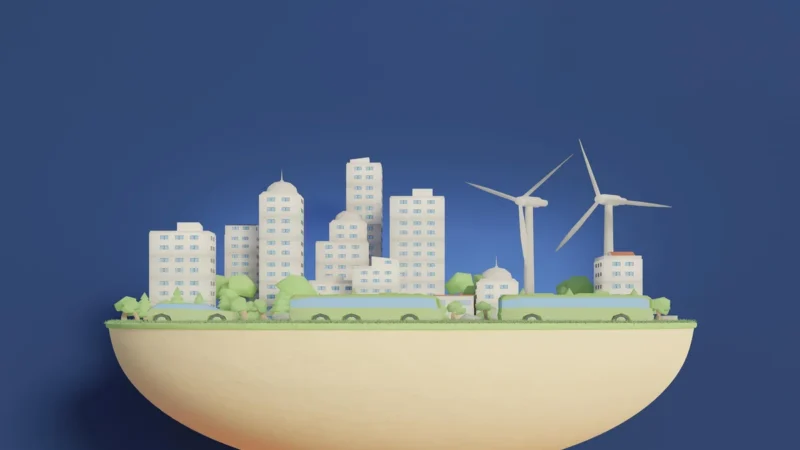Acid Rain Effects on Ecosystems: Environmental Degradation and Public Health Concerns

Acid rain, a widespread environmental issue, is characterized by the deposition of acidic substances onto the Earth’s surface through precipitation. Primarily caused by emissions of sulfur dioxide (SO2) and nitrogen oxides (NOx) from industrial processes and vehicular emissions, acid rain poses significant threats to both ecosystems and human health. This article explores the multifaceted impacts of acid rain on ecosystems, emphasizing its role in environmental degradation and the resultant public health concerns.
1.Ecosystem Disruption and Biodiversity Loss:
Acid rain exerts detrimental effects on ecosystems by altering the chemical composition of soil, water bodies, and vegetation. The increased acidity of these elements disrupts nutrient cycling and essential biochemical processes, compromising the health of various plant and animal species. Acidification of freshwater bodies leads to reduced fish populations and diminished aquatic biodiversity. Acid-sensitive species, such as amphibians and certain aquatic insects, are particularly vulnerable to the altered pH levels, resulting in decreased reproductive success and potentially local extinctions.
2.Forest Ecosystems and Soil Depletion:
One of the most visibly impacted ecosystems is forests, where acid rain weakens trees by leaching essential nutrients from the soil and causing aluminum toxicity. The depletion of nutrients, including calcium and magnesium, hinders tree growth and makes them more susceptible to diseases, pests, and extreme weather events. Forest decline not only disrupts natural habitats but also affects the water quality of downstream aquatic systems, leading to a cascade of negative ecological consequences.
3.Aquatic Ecosystem Impairment:
Acid rain significantly affects aquatic ecosystems by lowering the pH of lakes, rivers, and streams. Acidification disrupts the reproductive success of aquatic organisms and alters the composition of aquatic communities. Fish eggs and larvae are particularly sensitive to elevated acidity, resulting in reduced survival rates. Moreover, acid rain contributes to the release of toxic metals like aluminum and mercury from soils, further compromising aquatic health and potentially entering the human food chain.
4.Public Health Concerns:
While the direct impacts of acid rain on human health are less pronounced than its effects on ecosystems, there are still concerns that warrant attention. Acid rain contributes to the release of airborne particles and pollutants, exacerbating respiratory issues such as asthma and bronchitis. Moreover, the metals leached into water bodies can contaminate drinking water sources, potentially leading to long-term health problems if ingested.
5.Mitigation Strategies and Future Outlook:
Efforts to mitigate the effects of acid rain have been focused on reducing sulfur and nitrogen emissions through policy measures and technological advancements. Air quality regulations and the adoption of cleaner energy sources have resulted in some improvements. However, the long-lasting legacy of acidification in soils and water bodies means that recovery of ecosystems can be slow. Continued research, public awareness, and international cooperation are vital to further address this environmental challenge.
we can conclude this, Acid rain remains a significant concern due to its far-reaching consequences on ecosystems and potential implications for public health. The environmental degradation it causes, particularly in forests and aquatic systems, underscores the urgent need for sustained efforts to reduce emissions and restore affected ecosystems. By addressing acid rain, we can help safeguard both the delicate balance of nature and human well-being for generations to come.
FAQs
1. What is acid rain, and how does it form?
Acid rain is rainwater that has become more acidic than normal due to the presence of pollutants like sulfur dioxide (SO2) and nitrogen oxides (NOx) in the atmosphere. These pollutants are released from activities like burning fossil fuels and industrial processes. When they mix with moisture in the air, they form sulfuric acid and nitric acid, which are then carried by the wind and deposited onto the Earth’s surface during rain or other forms of precipitation.
2. How does acid rain affect ecosystems?
Acid rain can have damaging effects on ecosystems by altering the pH levels of soils, water bodies, and vegetation. It disrupts nutrient cycling, damages plants, and can lead to the decline of sensitive species. For example, aquatic ecosystems can be harmed as the increased acidity affects fish populations and aquatic insects, leading to imbalances in the food chain. Forests are also vulnerable, with trees experiencing nutrient depletion and increased susceptibility to diseases.
3. What are the impacts of acid rain on human health?
While the direct impacts of acid rain on human health are less severe than on ecosystems, there are still concerns. Acid rain can contribute to the release of harmful particles and pollutants into the air, which can worsen respiratory conditions like asthma and bronchitis. Additionally, the metals leached into water bodies can contaminate drinking water sources, posing potential health risks if consumed over time.
4. Are there any efforts to mitigate the effects of acid rain?
Yes, various efforts have been made to mitigate the effects of acid rain. These include implementing air quality regulations to limit the emissions of sulfur dioxide and nitrogen oxides, adopting cleaner energy sources, and promoting technological advancements in industries. These measures aim to reduce the pollutants responsible for acid rain formation and improve air quality.
5. Can ecosystems affected by acid rain recover, and what can individuals do to help?
Ecosystem recovery from acid rain can be slow due to the long-lasting impacts on soil and water chemistry. However, with continued efforts to reduce emissions and improve environmental conditions, recovery is possible. Individuals can play a role by conserving energy, using public transportation, and supporting policies that promote clean energy sources. By reducing our own carbon footprint, we can contribute to minimizing the factors that lead to acid rain formation and its negative impacts.


